How to measure SUCCESS in your calf raising program
There are so many variables when it comes to raising calves. How do you know if your calf raising program is successful? Here is a list of things you can measure to help you assess the effectiveness of your program.
Birth
Body weight: gives you a starting point for later measures to calculate weight gain.
Colostrum amount: cows should produce enough colostrum to feed the calf 10% of its body weight. If colostrum production is low factors that should be investigated are nutrition, photoperiod, genetics, and management practices.
Colostrum quality: The concentration of IgG in colostrum can be estimated by measuring density using a colostrometer or %Brix using a refractometer. A Brix value of 22% corresponds to 50 mg/mL. Therefore, any colostrum with a Brix reading of 22% or greater is considered high quality colostrum. Low quality colostrum can mean delayed harvest or and under exposed immune system, which is the case for many heifers.
First Week
Serum Total Protein: evaluating serum total protein 2-7 days after birth, can help you assess the success of your colostrum program.
New transfer of passive immunity goals for U.S. dairy calves
|
Category |
Serum IgG categories (g/L) |
Serum total protein level (g/dL) |
Brix level (%) |
Farm Level % calves |
|
Excellent |
> 25.0 |
> 6.2 |
> 9.4 |
> 40% |
|
Good |
18.0 – 24.9 |
5.8 – 6.1 |
8.9 – 9.3 |
– 30% |
|
Fair |
10.0 – 17.9 |
5.1 – 5.7 |
8.1 – 8.8 |
– 20% |
|
Poor |
< 10.0 |
< 5.1 |
< 8.1 |
< 10% |
Source: Lombard presentation, DCHA 2020 Conference
Body weight: measuring body weight at one week old will help you assess the successfulness of your early life milk program.
Health
It is important to keep good health records to assess success of your colostrum program, feeding program, and management practices.
Scours Events: DCHA Gold Standards suggest scours should be <15% in the pre-weaning stage.
Pneumonia events: DCHA Gold Standard, <2% in the first 120 days of life.
Treatments: It is important to track treatments to evaluate the success of any therapy. Also very important to track any antibiotic usage.
Death Loss: DCHA Gold Standards ≤3%. If you are losing more calves than that, investigate your colostrum, feeding, and management practices to see what needs to be changed.
Nutrition
Milk Solids: measure and mix milk replacer by weight, solids of whole milk should be monitored and adjusted if solids levels vary much.
Milk Temperature: always feed milk at body temperature of the calf (101° F, 38.3° C). If milk is cold by the time it gets to the calf, increase mixing temperatures.
Refusals: investigate why calves are not drinking their milk. This can be one of the first signs of illness and may result in needed electrolyte therapy.
Grain Intake: it is important to know when your calves are taking off on grain intake. Weaning criteria should be based off how much dry feed the calf is eating. Calves that are not consistently eating 3 lbs. (1.4 kg) of grain per day, should not be weaned.
Weaning
Grain Intake: Measuring grain intake for the first week after weaning will measure the success of #1 rumen development, and #2 familiarization of calves with their new environment. Ideally, calves are left in the hutch one week after weaning so they don’t have to experience the calorie deficit while adjusting to a new environment. Evaluating grain intake after moving calves to group housing will tell you how well they adjusted to their new environment, and if there is enough bunk space.
Water Intake: water intake is super important for hydration of the calf. If calves are not drinking enough water, they will not eat as much and will be more likely to develop respiratory disease. Calves in the weaning pen should drink 3-4 gallons of water each day.
Body weight: Calculating average daily gain at weaning assesses the success of your milk feeding program. Measuring gains one-week postweaning assesses the success of your transition to the weaning pen.
This list might seem a little overwhelming at first. It may not be logistically possible to measure everything, but measuring the things you can, will help you in benchmarking and evaluating any changes made to your calf raising program. You may just pick a couple to start and add more later. There is always something to work on when it comes to raising calves!
Written by: Mariah Gull, M.S.
